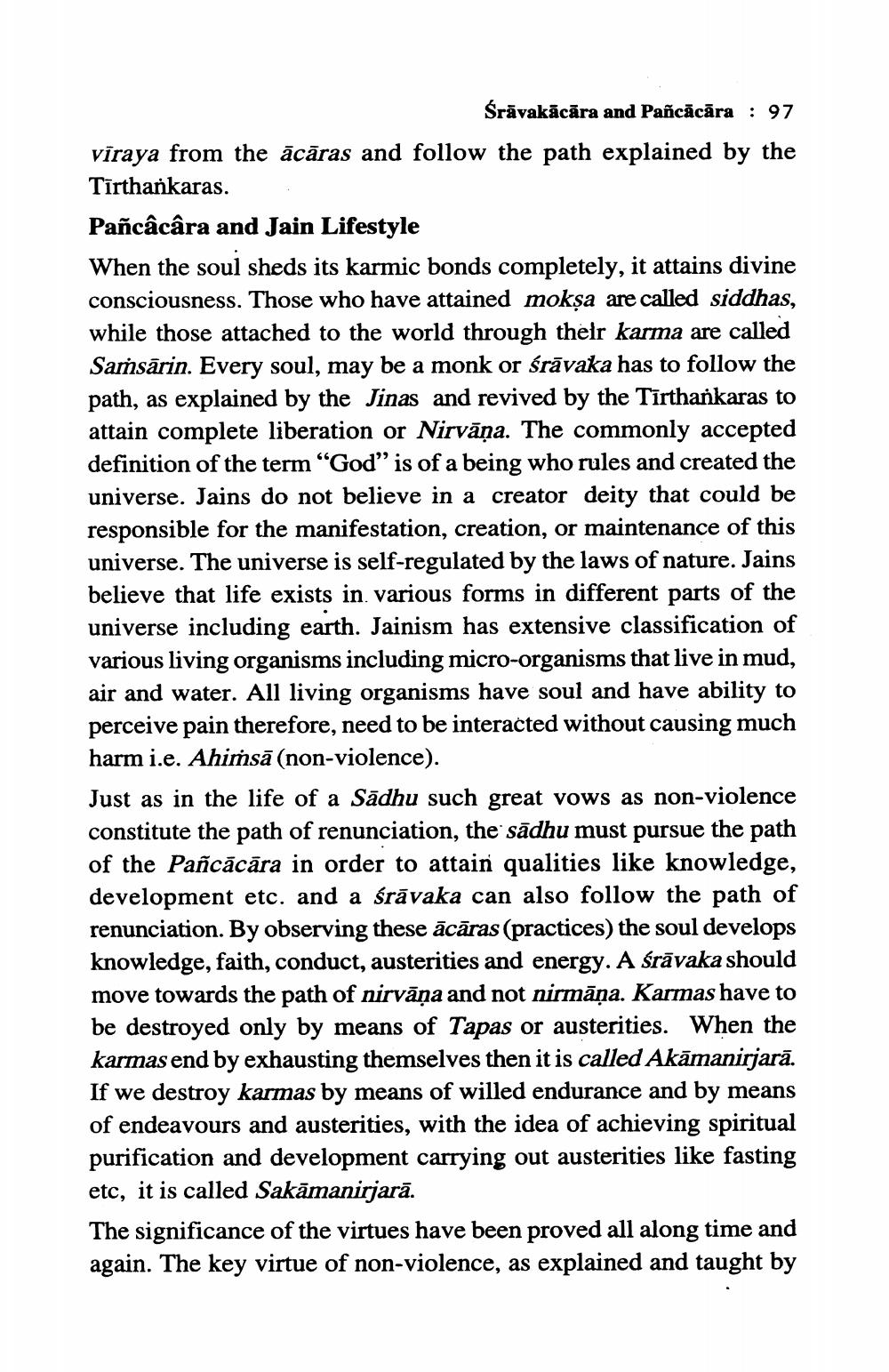________________
Srāvakācāra and Pañcācāra : 97
vīraya from the ācāras and follow the path explained by the Tīrthankaras. Pañcâcâra and Jain Lifestyle When the soul sheds its karmic bonds completely, it attains divine consciousness. Those who have attained mokșa are called siddhas, while those attached to the world through their karma are called Saṁsārin. Every soul, may be a monk or śrāvaka has to follow the path, as explained by the Jinas and revived by the Tīrthankaras to attain complete liberation or Nirvāņa. The commonly accepted definition of the term “God” is of a being who rules and created the universe. Jains do not believe in a creator deity that could be responsible for the manifestation, creation, or maintenance of this universe. The universe is self-regulated by the laws of nature. Jains believe that life exists in various forms in different parts of the universe including earth. Jainism has extensive classification of various living organisms including micro-organisms that live in mud, air and water. All living organisms have soul and have ability to perceive pain therefore, need to be interacted without causing much harm i.e. Ahiṁsā (non-violence). Just as in the life of a Sādhu such great vows as non-violence constitute the path of renunciation, the sādhu must pursue the path of the Pañcācāra in order to attain qualities like knowledge, development etc. and a śrāvaka can also follow the path of renunciation. By observing these ācāras (practices) the soul develops knowledge, faith, conduct, austerities and energy. A śrāvaka should move towards the path of nirvāṇa and not nirmāņa. Karmas have to be destroyed only by means of Tapas or austerities. When the karmas end by exhausting themselves then it is called Akāmanirjarā. If we destroy karmas by means of willed endurance and by means of endeavours and austerities, with the idea of achieving spiritual purification and development carrying out austerities like fasting etc, it is called Sakāmanirjarā. The significance of the virtues have been proved all along time and again. The key virtue of non-violence, as explained and taught by




